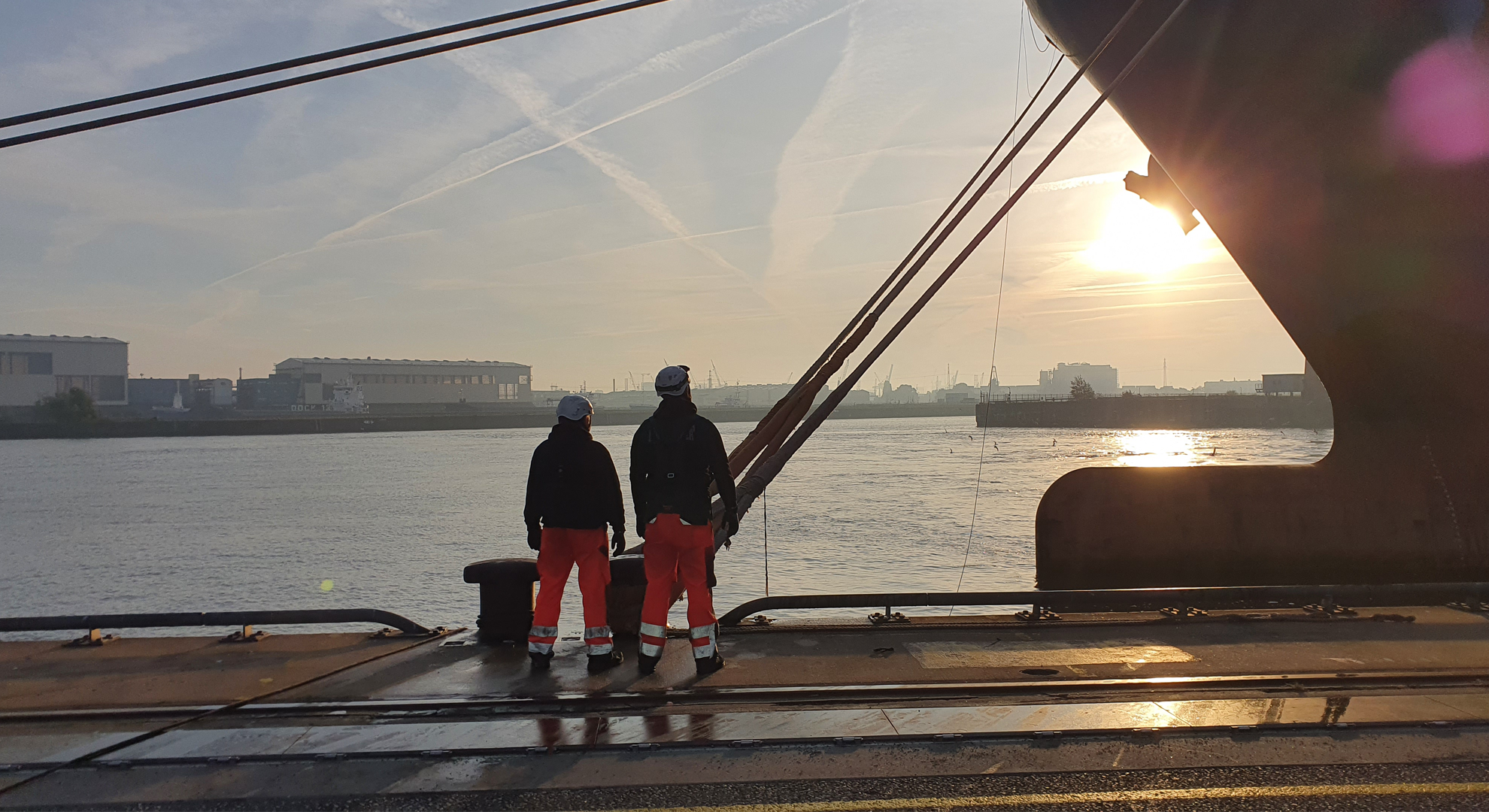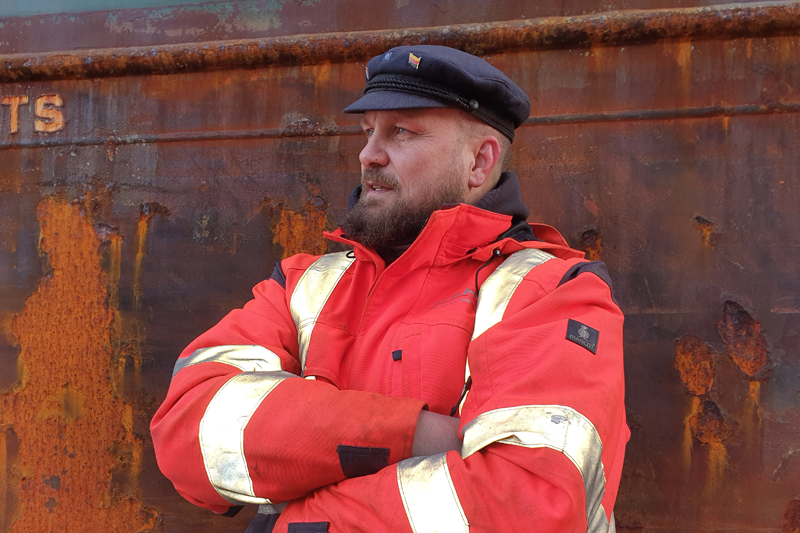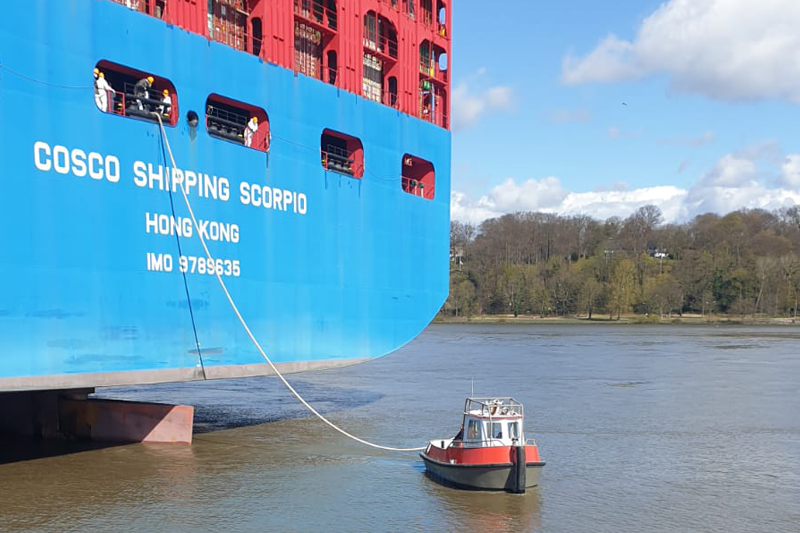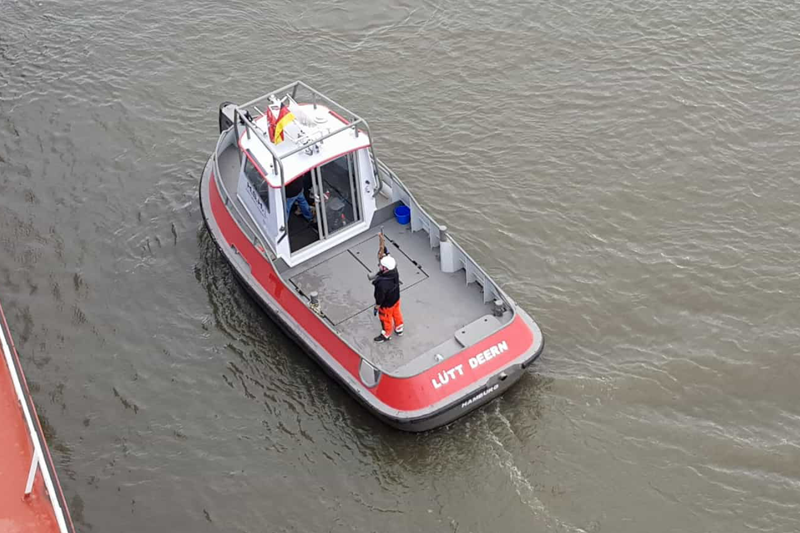Diving straight into IT projects
Two software developers at Eurogate report their experience ...

From container ships, multifunctional vessels and bulkers to tankers, cruise ships and roll-on/roll-off ships, spanning anywhere from 80 to 400 metres in length – almost all ships at Germany’s largest port require moorers when docking and unhitching, who assist crews both from the pier as well as on the water.
Nowadays, in addition to their internal training, the personnel have to complete a three-day seminar with the port pilots. When Frank Kremser changed careers from a self-employed restauranteur to moorer 15 years ago, this kind of training was not yet available. He first performed dry runs with his friend who suggested the job. “We simulated ship manoeuvres using deck chairs at the allotment, until I understood how it worked,” Kremser recalls. Despite being a Hamburg native, the maritime job was entirely new territory for the trained gas fitter and plumber.
At the beginning, it wasn’t easy for him to start from the bottom as an assistant. However, he soon began to enjoy the work and quickly ascended the ranks to become foreman. “But I still join in with everything,” he emphasises. Equipped with reflecting clothing, safety vest, helmet, gloves and safety footwear, he goes out together with his colleagues in addition to handling his deskwork.

They work in regular shifts, since the vessels come and go around the clock, 365 days a year. The procedure is always the same: the mooring team receive information about when a ship is expected to arrive or depart from the Hamburg Vessel Coordination Centre (HVCC), which oversees large-vessel, feeder and inland vessel traffic at the Port of Hamburg. They then leave their base at HafenCity in their mooring vehicles or boats and head for the respective terminal or deployment location. “The number of people staffed on a shift depends on how many ships are expected,” Kremser explains. Usually, one to four members of staff are called out for each ship, but it can even be up to eight in the case of a tanker.
“Where possible, we always have the winch with us,” the moorer adds. After all, the weight of the lines ranges between ten and 300 kilograms. “And it’s impossible to tether heavy plastic lines by hand.” Each callout typically takes around one and a half hours. But some waiting time is also normal.
The job requires concentration and experience, since it also entails a number of risks: “Sometimes, for example, the fore spring line – i.e. the line that is tethered from the bow and led ashore at a backward angle – is so tense that you could balance on it,” Kremser explains. However, it is important that the line does not break, as it would otherwise spring back like a rubber band and potentially cause severe, even fatal injury.
Occasionally, other challenges also arise. Kremser remembers the Hamburg Cruise Days from a few years ago very well: the crew on the particular ship that was supposed to lead the parade had thrown the line into the water. The current moved it under the ship, where it got caught. “Divers had to come to free the line,” Kremser recounts.

Communicating with the crew on board can also be difficult at times. This is not just because of perhaps poor English skills and the noise of running engines, but also simply because the mooring team are usually 20 to 30 metres away from the crew. What’s more, although they can look over the railing, they can’t see everything from above. “If need be, we also communicate using our hands and feet,” Kremser explains.

H.S.H. has no lack of junior talent: “In 80 percent of cases, we take on new people as assistants, who support us every now and then over the years – often in shift work – in addition to their main job, before they then join our ten-strong team of permanent employees.” Career changers are very welcome. “What matters in our work are well-coordinated teams, where everyone can count on each other,” stresses Kremser.
Training: in-house training and three-day harbour pilot seminar
Job Description: In seaports, moorers enable crews of seagoing vessels to dock and cast off safely. Depending on the size of the ship, mooring from the land involves several people – sometimes with the help of mooring cars. Alternatively, team members need to get involved from the mooring boat if seagoing vessels are tethered to pilings or if a series of
pilings are situated some distance in front of the quay wall. According to the ship size, these mooring lines also need to be run out from the seagoing vessel several times.
Requirements: good secondary school qualifications at a minimum, a driving licence and good physical condition
Softskills: Team skills and a resistance to weather